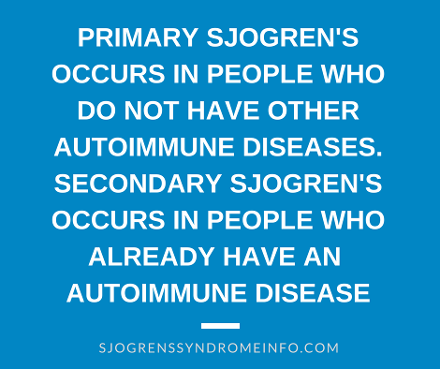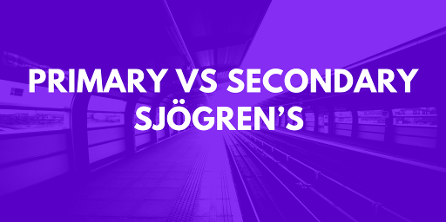Types of Sjogren's Syndrome
What is the difference between Primary and Secondary Sjogren's Syndrome?:
1. Primary - localized mainly to the eyes and mouth
People with primary Sjogren's have a greater chance of extra glandular involvement.

2. Secondary - systemic - occuring in conjuction with other connective tissue diseases such as lupus or rheumatoid arthritis.

Seronegative means that your blood does not produce the antibodies that show up when tested for the presence of an antibody.
Antibodies are indicators of autoimmune disease. Not everyone with Sjogren’s has antibodies to SSA and SSB.
"...these antibodies alone do not account for all cases of Sjogren's syndrome, and the presence of anti-CCP and anti-centromere autoantibodies may account for some cases of primary Sjogren's syndrome in patients seronegative for anti-SSA and anti-SSB." MedPage Today
Seronegative autoimmune diseases.

Treating Primary vs. Secondary Sjögren’s
Does it really matter? NO - It certainly doesn't matter to the patient or the clinician treating a patient. It doesn't alter treatment, since treatment for these diseases is based largely on the clinical manifestations and symptoms. All patients should be treated on a case-by-case basis.
Does the label mean your disease is more or less severe? ABSOLUTELY NOT. If someone has labeled you as having "Secondary Sjögren’s," it does not mean that your Sjögren’s is less severe or secondary in importance to the other condition. It also doesn't mean that symptoms that were labeled as Sjögren’s symptoms previously are now symptoms of the other disease. Autoimmune diseases often overlap, and sometimes it's difficult to tell if a symptom is Sjögren’s or, say, lupus. In fact, Sjögren’s is the most frequent disorder that occurs in conjunction with other autoimmune and rheumatic diseases, so, again, your signs and symptoms must guide the treatment.
Does the label make a difference as to whether patients are monitored for specific complications or not? NO. Again, your management and treatment should depend on your manifestations of autoimmune disease.